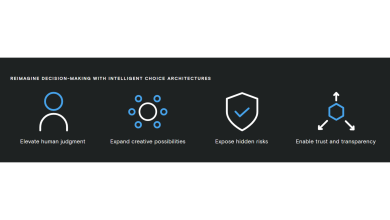
Decentralized finance kicked off with a single, powerful idea: trust. Bitcoin gave strangers a way to exchange value without relying on banks, politicians, or shadowy institutions. Satoshi Nakamoto’s open-source code and public ledger created what he called a “trustless” system, where math took the place of middlemen. That vision pulled in millions of dreamers, coders, and investors who saw a new financial world taking shape.Fast forward fifteen years, and that dream’s caught in a storm. For every genuine developer or long-term builder, there’s a crowd of opportunists cooking up the next “get-rich-quick” token. Rug pulls, Ponzi coins, and slick social media pump schemes are popping up faster than regulators can keep up. Entire communities are built on hype instead of substance, and it’s chipped away at the public’s faith in digital assets.
Enter the AI Investor
Artificial intelligence is stepping into this wild arena, not as a hype machine, but as a truth seeker. AI can read markets at lightning speed, but its real strength is sniffing out fact from fiction. My work with AI Crypto Risk started with a simple question: can an algorithm spot a scam’s telltale signs before humans get burned?The answer’s yes, if you teach it where to look. AI models can dig through blockchain transactions, white papers, Telegram chats, and social media buzz to catch red flags humans might miss. They can check token distribution to see if insiders hold too much, or spot wallet activity spikes that often signal a rug pull. They can even analyze the language in marketing pitches, flagging exaggerated claims or recycled promises with a risk score.In short, AI’s like a market detective. Early crypto investors leaned on gut instinct; AI leans on cold, hard stats. It doesn’t sleep, panic, or chase trends. That kind of objectivity is exactly what this industry needs right now.
Learning from the Ashes
History’s littered with cautionary tales. Bitconnect dangled guaranteed returns with a shady “trading bot.” Karatbars International hooked people with talk of gold-backed tokens. Both crashed hard, wiping out billions and leaving regulators playing catch-up. What ties these disasters together? Greed, sure, but also information gaps: investors couldn’t peek behind the curtain until it was too late.AI risk engines are built to close that gap. By studying data from past collapses, they learn the patterns of fraud, like the timing of wallet movements, the tone of announcements, or sudden drops in liquidity. When the model flags a project as sketchy, it gives users a reason to pause and dig deeper before sending their money. It’s about prevention, not just punishment.
The Politics of Perception
Here’s the kicker: just as AI’s getting good at protecting investors, crypto’s narrative took another weird turn. In 2025, cryptocurrency got a mainstream spotlight when President Trump, despite thirty+ felony convictions, jumped on the bandwagon and launched Trump Coin. Some saw it as a win for crypto; others saw it as a circus.For serious developers and investors, it was a wake-up call. When political figures turn tokens into branding tools or fundraising gimmicks, it muddies the line between innovation and manipulation. That’s why independent, data-driven analysis matters. AI doesn’t care about politics. It measures credibility, not charisma.
Bitcoin’s Timeless Standard
Through all this noise, Bitcoin still stands tall. Its fixed supply, open ledger, and decentralized setup don’t need marketing glitz. No one person runs it. It can’t be inflated, censored, or tweaked on the sly. That’s the gold standard for what a digital asset should be.But as new tokens flood the market, the industry’s drifting from that benchmark. Many projects launch with flashy branding and influencer campaigns but little real meat. Their creators know most investors don’t read smart contracts or check wallet addresses, they just vibe with the hype. AI’s job is to bring logic back to a space ruled by emotion.
Building an AI Firewall for the Future
AI Crypto Risk takes a layered approach. The models dive into live blockchain data to spot odd transaction flows or centralized ownership. They track social chatter on platforms like Twitter, Reddit, and Telegram to separate real buzz from coordinated hype. They even monitor filings, exchange listings, and wallet patterns tied to big funds to gauge how serious investors are engaging with a token.The result? A Scam Likelihood Score, a straightforward number that gives regular people the kind of insight pro funds have. It’s like handing everyday investors a superpower.
A Push for Smarter Innovation
If crypto’s first decade was about freedom, the next one has to be about responsibility. AI can help build that bridge. Instead of waiting for regulators to clean up billion-dollar messes, developers and investors can use these tools to self-govern. Transparency shouldn’t be an afterthought; it should be the main pitch.AI-driven analysis also sparks a cultural shift. Scams feed on confusion, but knowledge kills fear. When users see why a token’s risky, they make smarter calls. Over time, that builds a healthier ecosystem, one where real innovation gets rewarded and deception gets called out.
Wrapping Up
AI isn’t here to replace human judgment; it’s here to back it up. In a market drowning in misinformation and political stunts, intelligence, not ideology, should steer the ship. Crypto’s original promise was trust without middlemen. AI’s promise is making that trust measurable.Where these two meet is the next chapter of finance: a world where algorithms shield investors, transparency beats hype, and truth becomes the most valuable currency of all.



